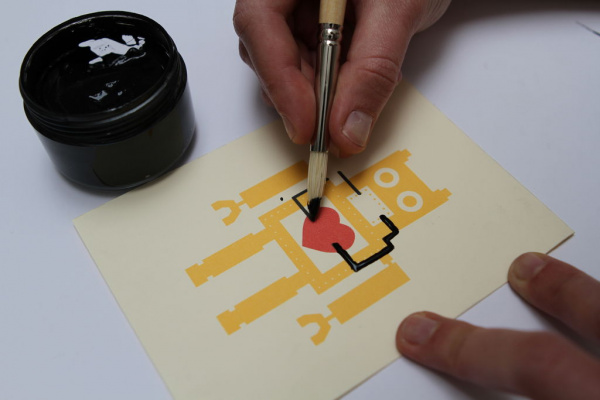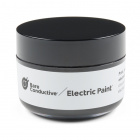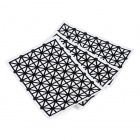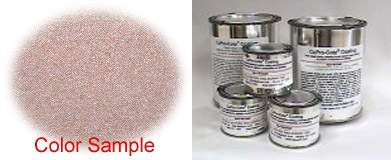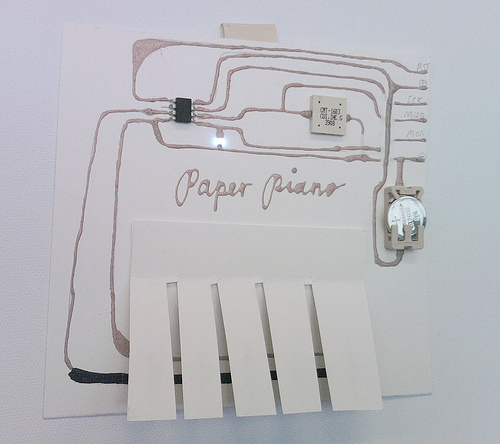The Great Big Guide to Paper Circuits
Conductive Paint Traces
Conductive paints are a great way to create artistic pieces with electronics. Use a brush or a squeeze bottle to create traces that curve and swirl to connect components. Conductive paints can also be used to 'glue' components to a trace. This method can be the most frustrating to use because of the mess factor and dry time. We recommend patience and practice when beginning to work with these materials.
Cost: Varies. Most conductive paints start at ~$10.
Mess Level: Moderate
Pros:
- Use it like any other water-based paint.
- Can cover with other paint mediums (such as acrylic) after drying to create a seamless piece of art.
- Easy to layer more paint on top of an existing trace to troubleshoot or fix an unreliable connection.
Cons:
- Not conductive until fully dry. Depending on the thickness of your painting and the type of paint, may need to dry overnight. A hair dryer or heat gun will speed this along.
- May take some practice to get consistent lines/traces.
- Copper based paints will oxidize quickly and can have a short shelf life.
- Prone to cracking when under strain. Best on flat surfaces. Painted traces over folds or on bendable projects will mostly likely fail with repeated movement.
Bare Conductive Electric Paint
Bare Conductive's Electric Paint is a nontoxic, solvent free and water soluble carbon-based paint. Available in a squeeze tube for finer lines or pot for brush and stencil use.
CuPro-Cote Paint™ from LessEMF
CuPro-Coate Paint is water based paint containing copper, similar to latex paint. Comes in 4oz through gallon containers. Due to short shelf life/working time once opened, we recommend the 4oz size.
Instructions:
When planning your circuit design, first sketch out where the traces will go. Drawing the path with a pencil or marker before painting will make the process much easier.
Glue down any components you will be using onto your paper. Use tweezers for precise placement of smaller components.
Using a paintbrush or squeeze bottle, carefully apply the paint along traces and over the wires or pads of the components in your circuit. Let dry completely before testing.
Examples:
Additional Resources:
- Painted Circuits - guide to painting with CuPro-Cote silver paint from MIT's High-Low Tech Lab.
- Diluting Electric Paint - tutorial on thinning Bare Conductive paint.
- Stencil Graphics with a Vinyl Stencil - how to make a vinyl stencil for use with conductive paint.
- Connecting to Electric Paint - for Bare Conductive products.
- Conductive Paints and Inks - guide from Kobakant.
